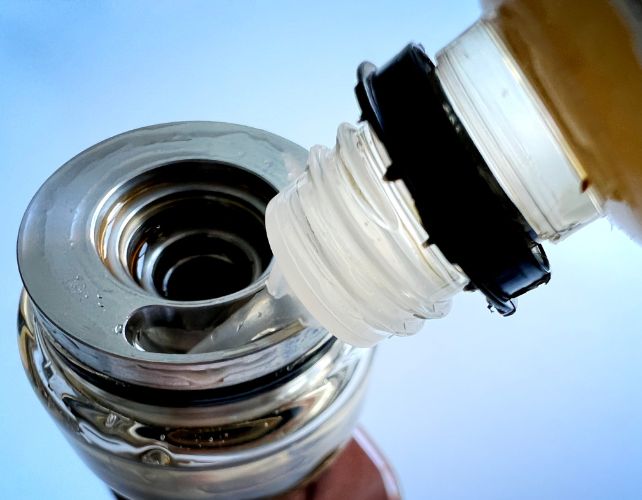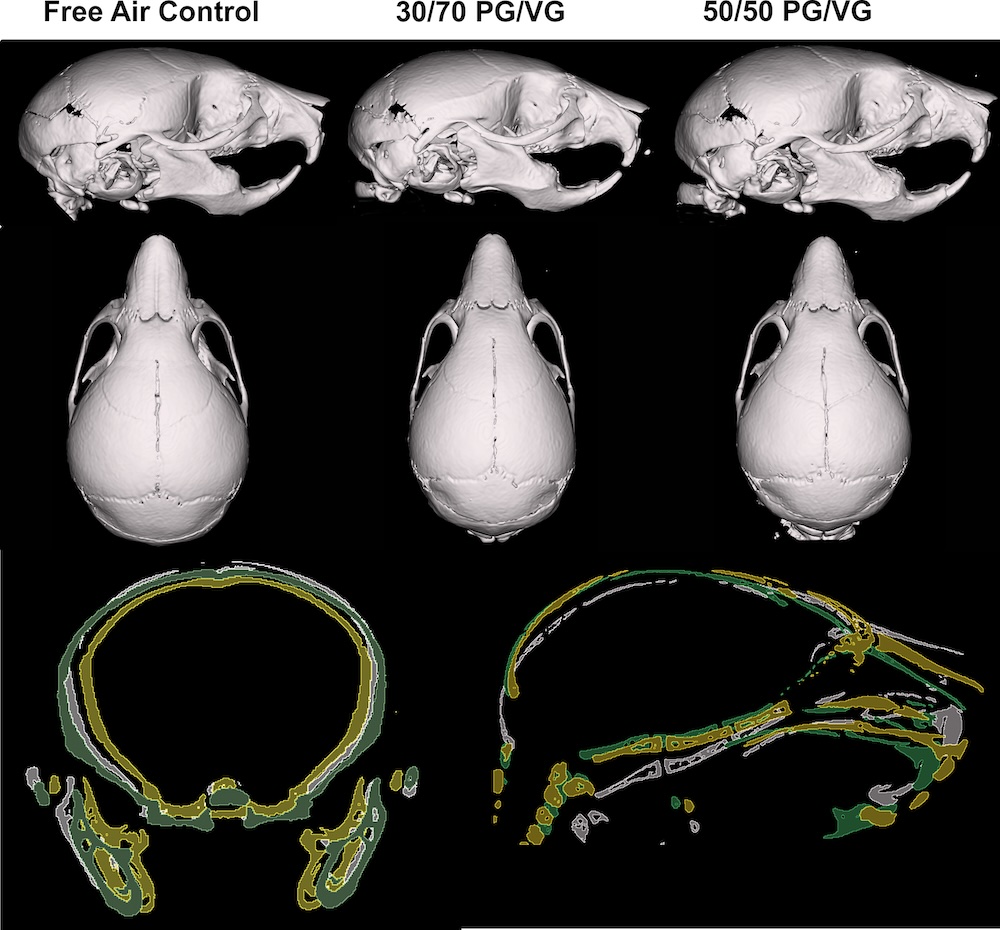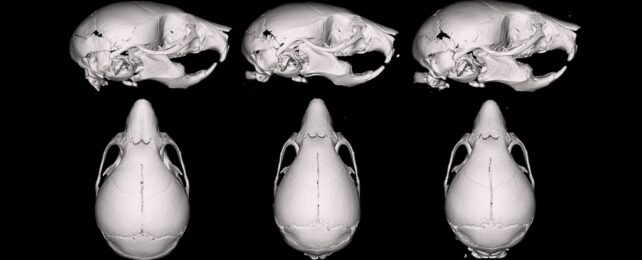Pregnant mice exposed to the base ingredient of most vape 'juices' develop babies with smaller, narrower skulls, a new study has found.
It's a concerning find, especially given the 'vapor' in this experiment contained none of the other chemicals usually found in vapes, not even nicotine. It suggests that even nicotine-free vapes may not be safe, especially if you're pregnant.
The key ingredients in vape fluids are usually a humectant – a carrier fluid that makes up the bulk of the material, most commonly propylene glycol and glycerol (otherwise known as vegetable glycerine) – combined with nicotine, and various flavors and sweeteners.
The study, led by anatomist James Cray from The Ohio State University College of Medicine, was designed to define a baseline of what effects the carrier substances have on the body. This means that in future experiments, the researchers can add other components of vape fluid, like nicotine, to this carrier, with a better idea of which effects can be attributed to which substance.
Related: 'Popcorn Lung': Vapers at Risk of Irreversible Disease, Experts Warn
Cray and his team prepared two basic formulas of plain vape fluid out of propylene glycol and glycerol. One formula contained a 50/50 mix of propylene glycol and glycerol, while the other had a 30/70 ratio.
Because propylene glycol was previously found to increase nicotine uptake, Cray says, many companies have shifted to ratios with more glycerol, "trying to position this as a safer alternative."
It turns out this may not be the case.

Pregnant mice were exposed to vape hits of one of the formulas or fresh air as a control, at a rate of one puff per minute of four hours in a day, across five days each week. This continued through their roughly 20-week-long pregnancies, which resulted in 21 litters and 140 mouse pups.
Fourteen days after birth, the mouse pups were euthanized, their skulls measured in detail and scanned for 3D reconstruction.
While Cray's team had expected the 30/70 fluid would have fewer negative effects on skull and face development than the 50/50 formula, the results were quite the opposite.
"The 50/50 mixture had no dramatic statistical changes – and that's where we were looking for the difference. We thought heavier propylene glycol should be causing more effects, and it was the exact opposite," Cray says.
Compared to the other groups, pups of mothers exposed to the 30/70 fluid while pregnant had significantly smaller craniums and faces, in measures of both width and length, and shorter noses.

"What we see is a consistent narrowing of all of the facial features, and the same thing as we move back into the cranium as well. So globally they're narrower and a little bit shorter-headed, which does mimic some observable changes that we see in children," Cray explains.
The group exposed to the 30/70 mixture also had significantly lower body weight compared to the others, though still within the normal range for mice of this age.
Figuring out the health impacts of vapes is tricky. For ethical reasons, it's not possible to do this kind of testing directly on humans; long-term natural experiments, in which scientists observe the effects vaping has on existing users, require time.
While experiments on animal models are considered more ethical and time-efficient, their results can't always be extrapolated onto human health.
Additionally, lack of market regulation means the contents of each vape can vary widely. Isolating the effects of each component may help people make a more informed decision at the counter. That's especially important when vapes have been shown, in certain cases, to have some medical benefits, like helping people to quit smoking.
It gets even more complicated when you consider that vapes heat and aerosolize these components, which can result in the production of entirely different compounds.
For now, isolating each variable is the only way we're going to start seeing through the haze.
"This is a small study that speaks to the possibility that nicotine-free vaping is not safe," Cray says. "And it's a sign that we probably should study the nicotine-free products as much as we study the nicotine-laden products."
The research is published in PLOS One.
